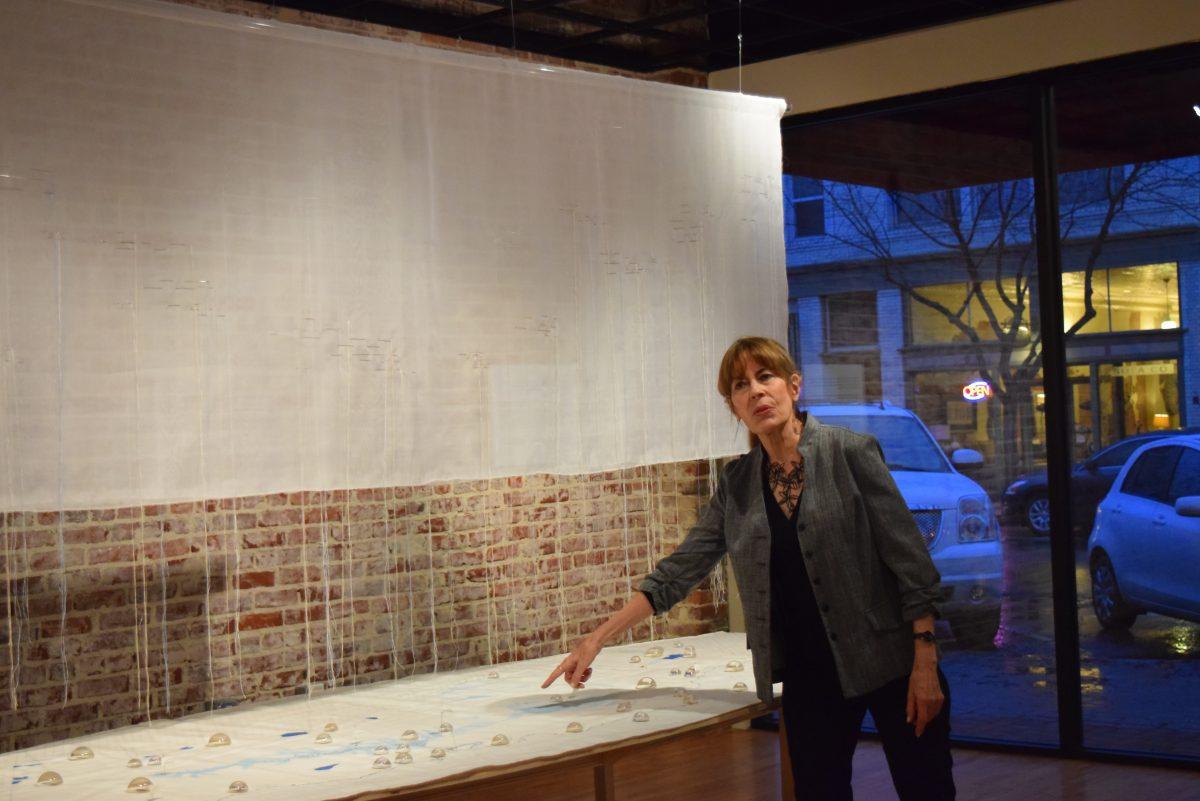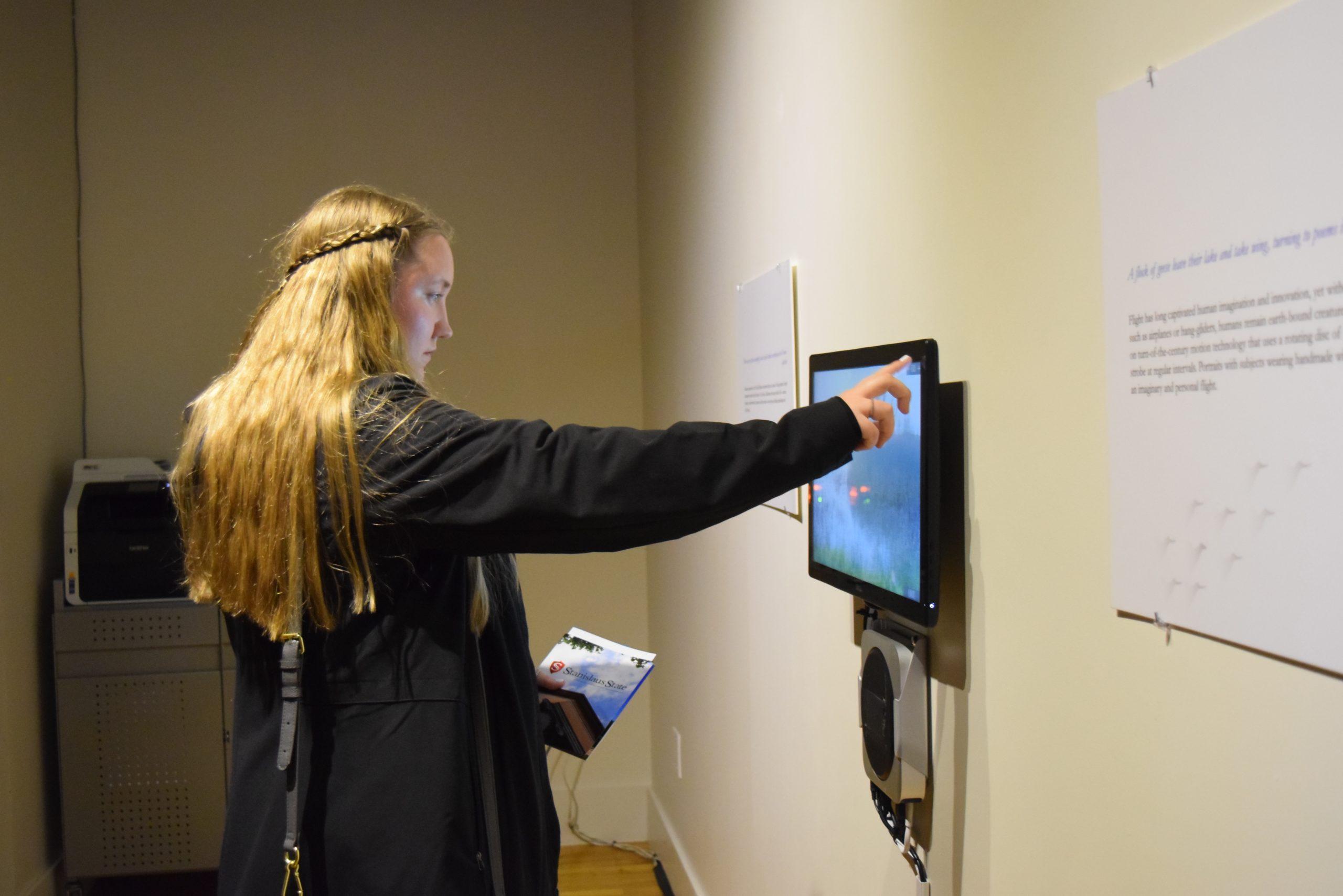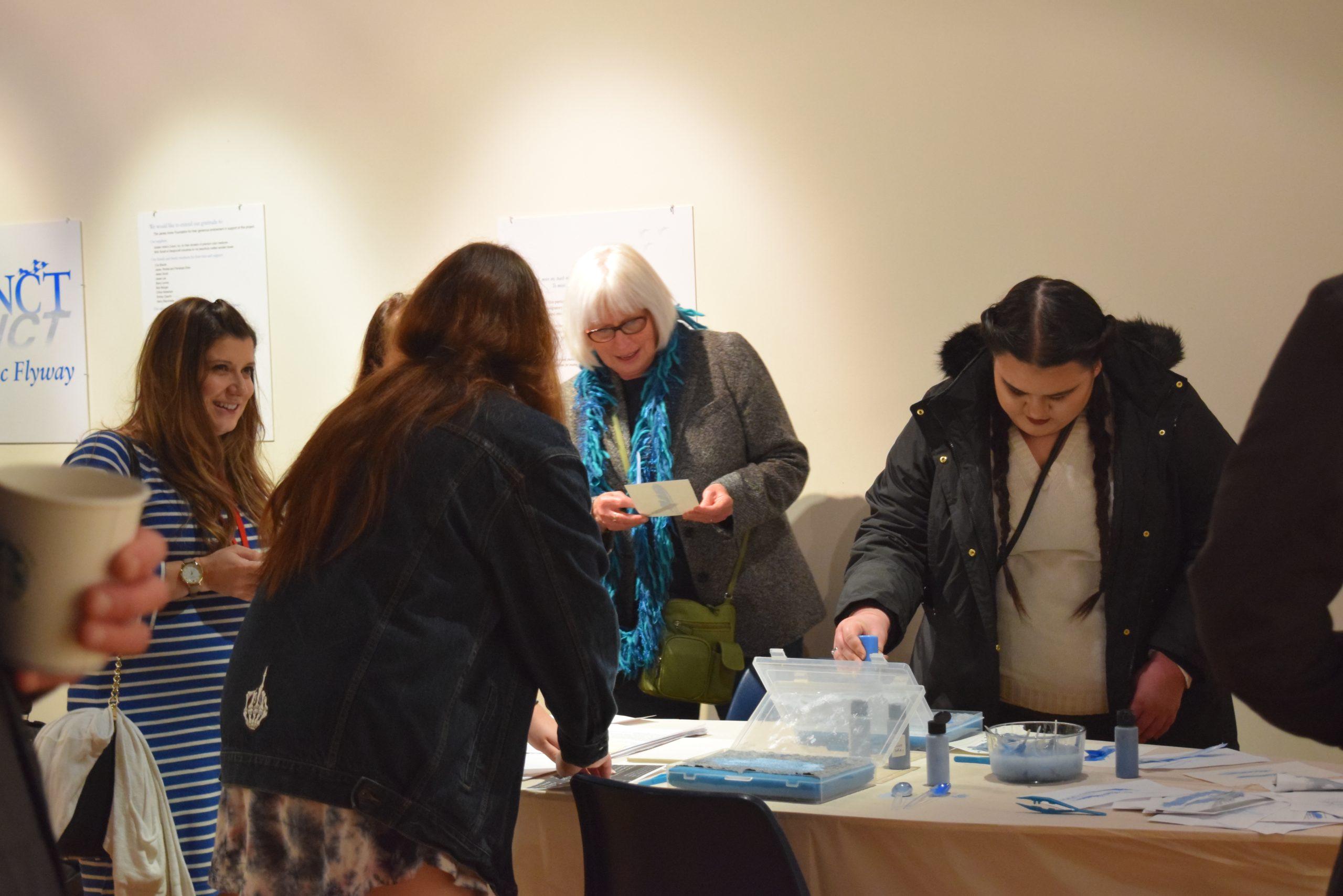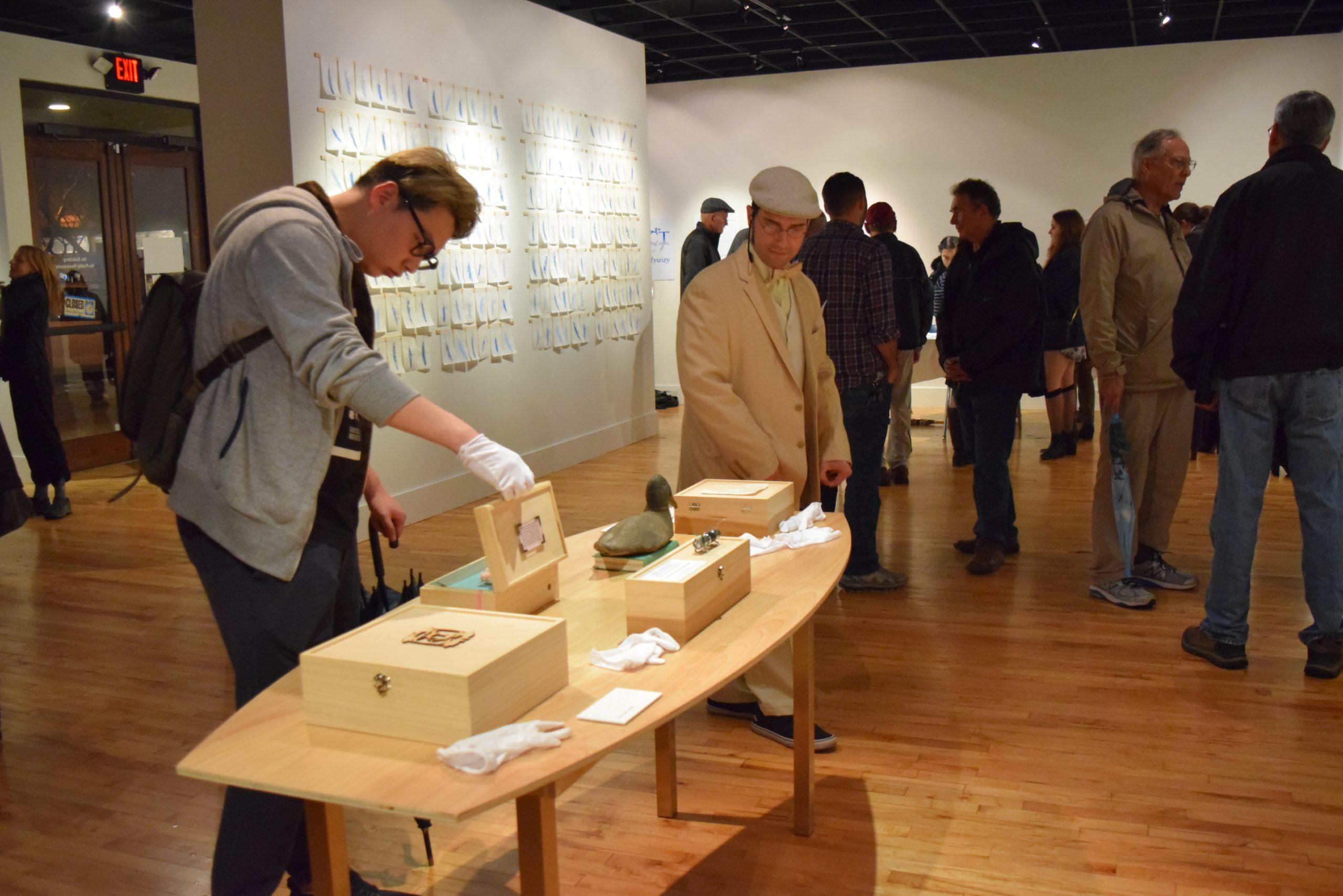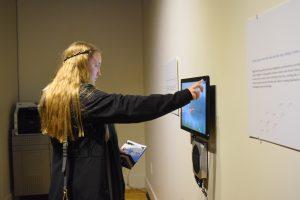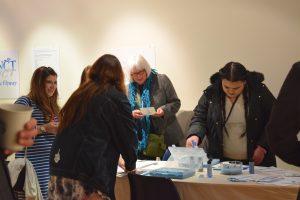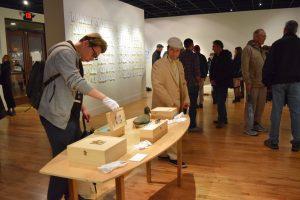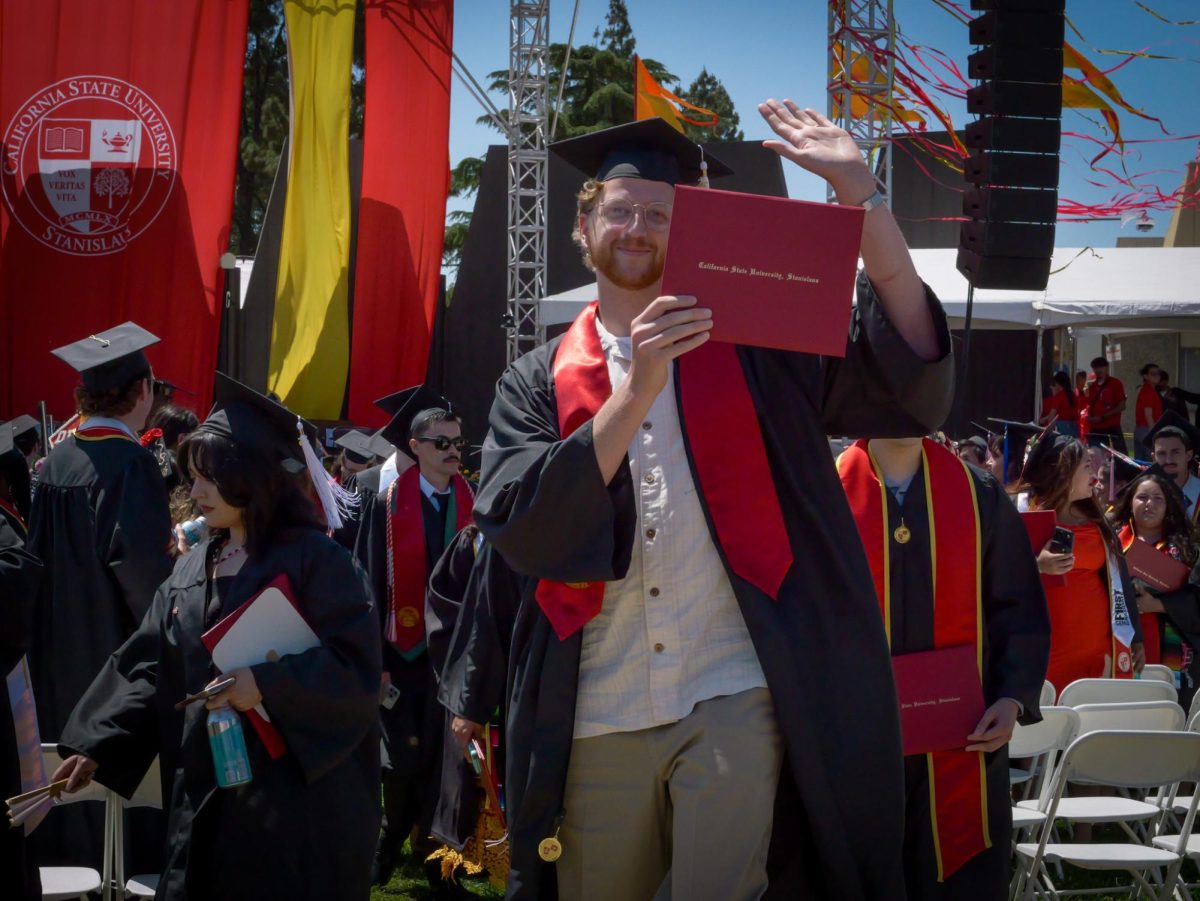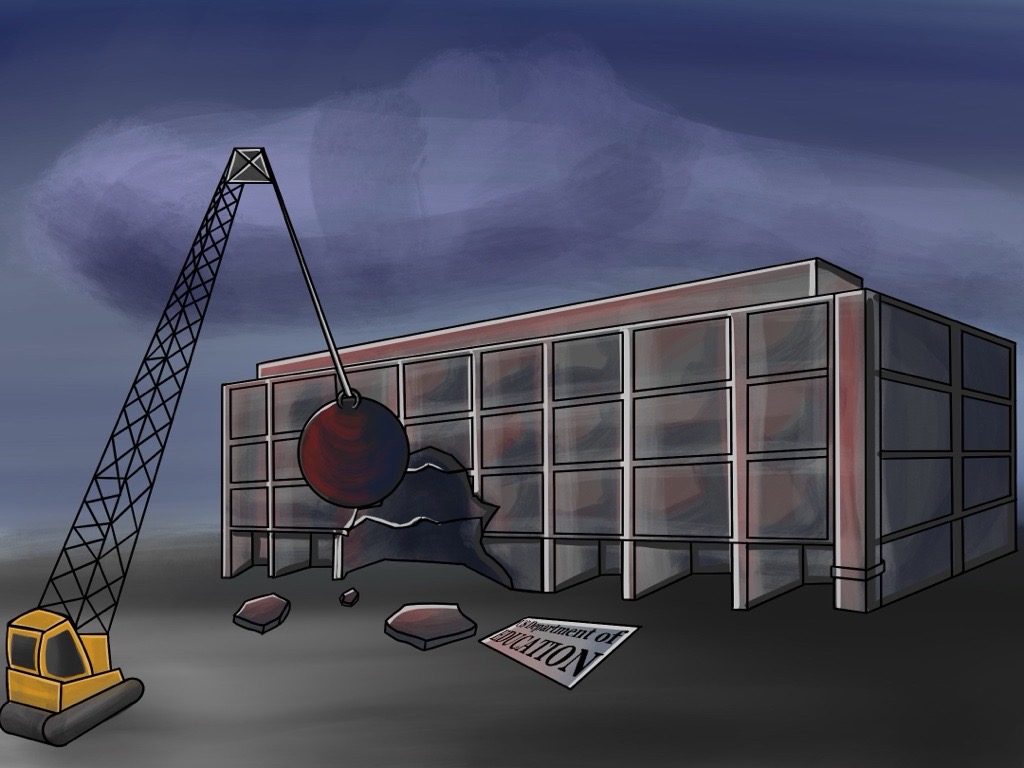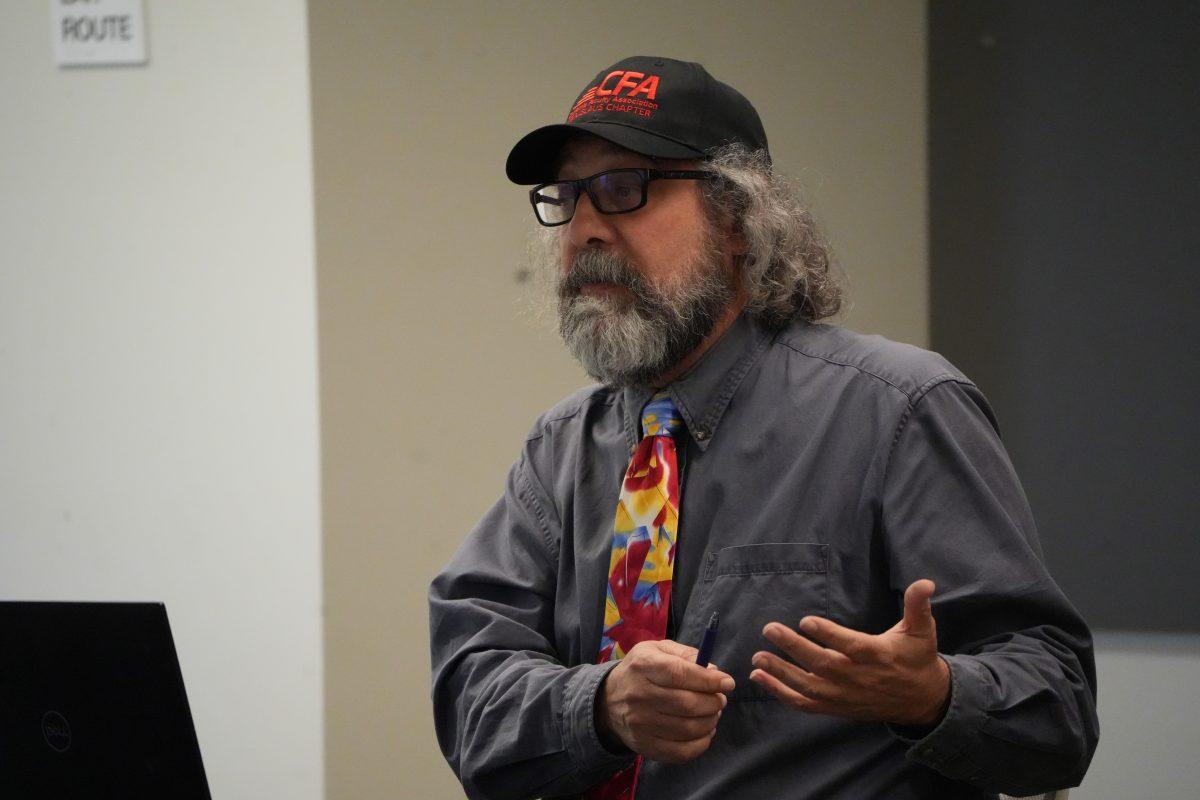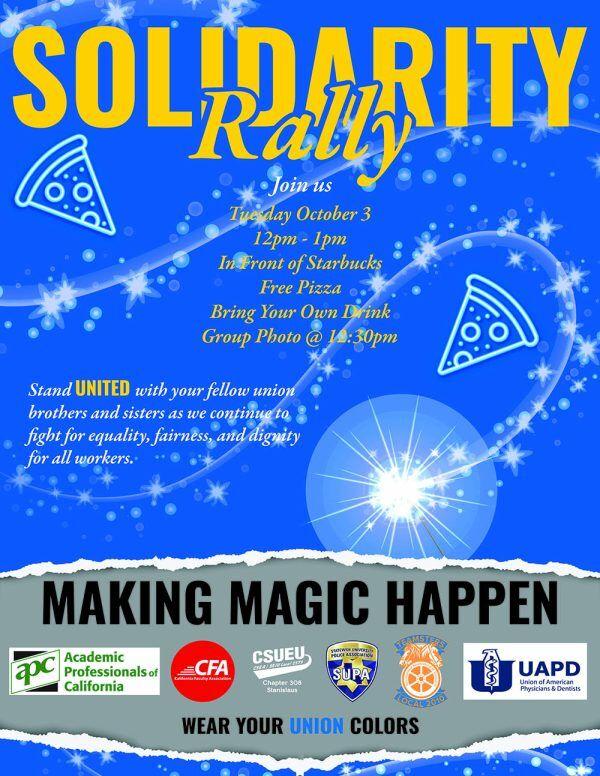Turlock’s Art Space on Main had its grand opening for its newest art exhibition Instinct/Extinct: The Great Pacific Flyway on Feb. 9 at 5:30 p.m. During the event, Ann Savageau described her artwork, which was based on Dr. Philip Garone’s book “The Fall and Rise of the Wetlands of California’s Great Central Valley,” in order to provide a more interactive way of studying the Valley’s environmental history.
The exhibit encompassed a representation of the Pacific Flyway through whimsical and interactive pieces made by the three artists of the gallery Valerie Constantino, Glenda Drew and Ann Savageau. Pieces seen within the exhibit included a striking, feather print wall created by UC Davis students. Each feather was as “unique and beautiful” as the next Savageau commented, and visitors were encouraged to make feather prints of their own with the supplies provided to them.
Upon entering the building, one of the first pieces a person might view is the large silk, organza sheet with needles woven throughout it that hung above a map of the Wetlands.
“It is meant to be sort of a visual metaphor for the flocks of birds flying across the sky, and we thought of them as needles which lace the sky with the earth because they are of both earth and sky. And, the Flyway itself is like a super highway in the sky, so that’s what the silk organza is all about,” Savageau said.
Viewers were also encouraged to interact with various wooden boxes on display such as The Hunter Box, which symbolized the hunting clubs that saved many wildlife refuges within the Valley that provided food for San Francisco and Los Angeles. Another box included the interwing structure of a bird, created by Constantino. This was located directly next to another interactive piece called the “Bird’s Voice Box.”
Artifact assemblage keys were provided to the visitors in order to provide a more in depth and historical look at each piece displayed.
Drew and Savageau also created works of art based on early motion picture technology like the stroboscope and the zoetrope.
“The zoetrope gives the idea of the birds flying across the sky, and the repetition of it is like a drop spindle with a very meditated kind of feeling. And it’s cyclical, so birds leave and they come back just like migration,” Savangeau said.
During her talk, Savageau explained that individuals could also interact with video screens and listen to interviews, put together by Drew, of hunters, conservationists and other persons connected to the Flyway.
“Those interviews are quite marvelous,” Savageau said.
This project took the artists approximately one year of research, with a budget of just a few thousand dollars, and filtering various ideas down to the complex pieces visitors viewed that evening.
“All three of the artist did a very good job of representing it in ways that only artists can. It’s not just a history, its more interactive, it makes you think about things in different ways, so I’d say it’s been very successful,” California State University’s (Stan Sate), Dr. Garone said.
The author of “The Fall and Rise of the Wetlands of California’s Great Central Valley”stated that he was inspired to write his book based on occurrences in the Sacramento Valley, the Sacramento, San Joaquin Delta, the San Joaquin Basin and the Tulare Basin that changed the demographics of the Valley and likewise affected the Pacific Flyway.
“I wanted to tell the environmental history of those four regions mostly from the time of statehood to the present, but also earlier… there are a lot of Wetlands in this valley and people begin to realize, biologists especially, that the Wetlands were really important for the migratory birds of the Pacific Flyway, which is what this exhibit is about,” Garone said.
He stated that Stan State students can visit any one of the three national wildlife refuges, which include the San Luis National Wildlife Refuge in Los Banos, the Merced National Wildlife Refuge and the San Joaquin River National Wildlife Refuge, just an hour away from the college.
“This was a labor of love,” Savageau said. “I didn’t really know the whole history about the Wetlands and the Pacific Flyway, and having a chance to do this installation was really educational for me.”
The exhibit will be open until Feb. 25 at the Art Space on Main center located in downtown Turlock.
Categories:
New Exhibit at Art Space on Main
Kristen Dias
•
February 15, 2017
Ann Savageau presenting Instinct/ Extinct: The Great Pacific Flyway’s opening piece. (The Signal/ Kristen Dias)
0
Donate to Signal
Your donation will support the student journalists of California State University, Stanislaus. Your contribution will allow us to purchase equipment and cover our annual website hosting costs.
More to Discover

